Index

Review: Breathing down GTX 560 Ti's neck
With the company’s launch of Geforce GTX 560, Nvidia expanded its performance segment offer quite nicely. The GTX 560 can be found at €150, while the GTX 560 Ti is available for €30 more, here.
Both cards were classified as so called ‘gamers’ sweet spot’, meaning that gamers on average budgets will love it and should be pleased with the performance offered. Optimum gaming resolution is 1680x1050, although 1920x1080 is possible as well, albeit after sacrificing some detail settings. 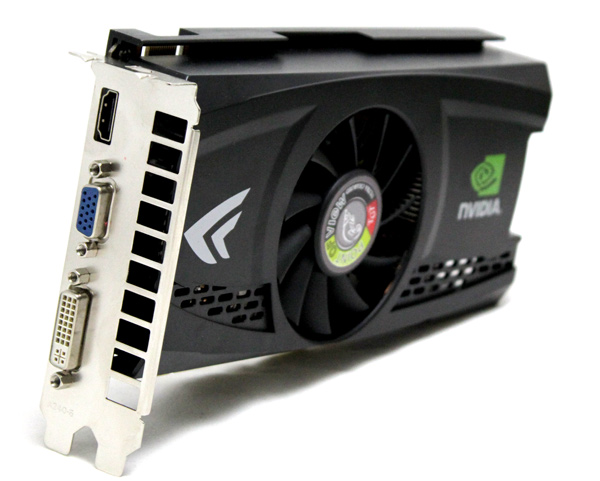
Thankfully, there’s always the option to overclock the card and allow for smooth 1920x1080 gaming ad Point of View/TGT did exactly that. In fact, PoV/TGT pushed the GTX 560 Ultra Charged Edition’s GPU from reference 810MHz to as high as 900MHz.
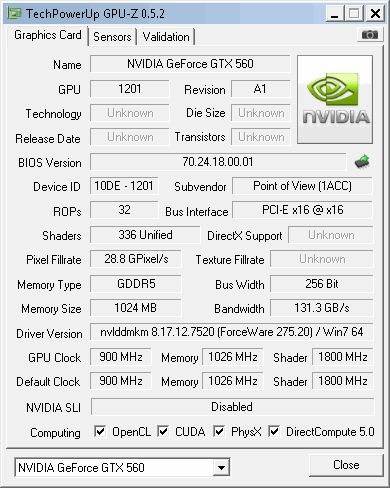
GTX 560 cards are built around the GF114 GPU. Compared to the GF114 on GTX 560 Ti cards, the GTX 560’s GF114 comes with one Shader-cluster less. By disabling the Shader-cluster, GTX 560 practically got the same specs as the GTX 460 (GF104): 336 shaders or CUDA processors, 32 ROPs, 56 TMUs and 256-bit memory interface. Hardware wise, it’s the same configuration but the GTX 560’s GPU is 135MHz faster and its memory is faster by 100MHz (400MHz effectively) than GTX 460’s.
Thanks to the improved GPU design, Nvidia could clock the GF114 much higher than GTX 460’s clocks, all the while keeping consumption at the same level.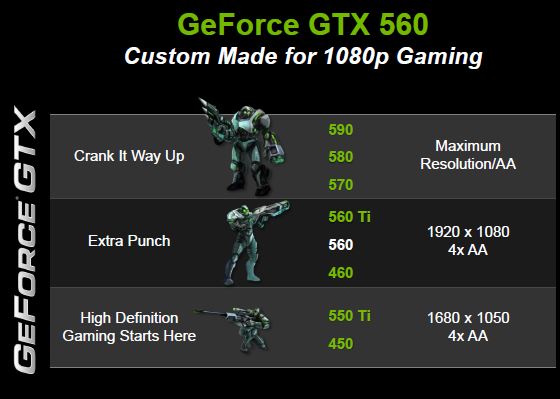
Performance wise, the GTX 560 is somewhere between the GTX 460 and GTX 560 Ti, leaning more towards the latter.
The GTX 560 Ultra Charged’s packaging is similar to that of GTX 560 Ti Ultra Charged card. Nvidia really made the design part easy for its partners, as all they had to do was erase the 'Ti's and ship them away.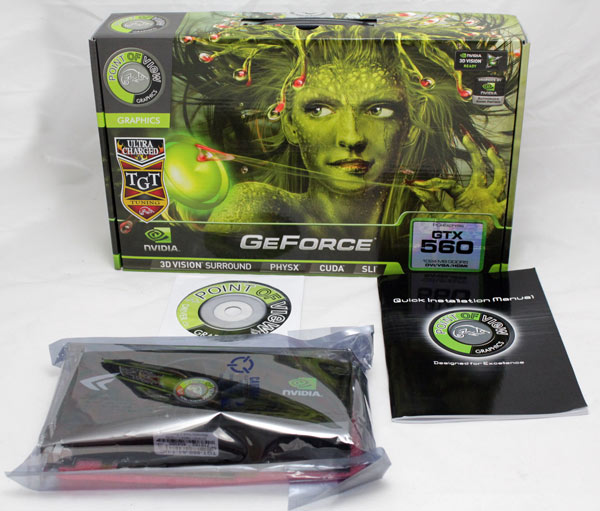
The card is named TGT-560-A1-1-UC and, as you can see, is quite a charmer. PoV/TGT used a black PCB and a black dual-slot cooler.
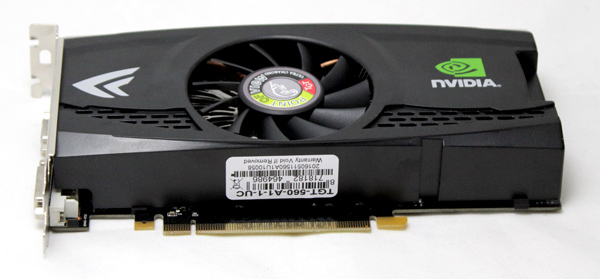
GTX 560 UC is 21cm long, which is 2cm shorter than the GTX 560 Ti.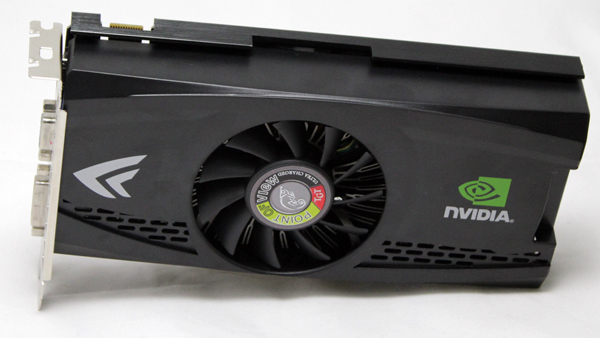
The card comes with two 6-pin power connectors.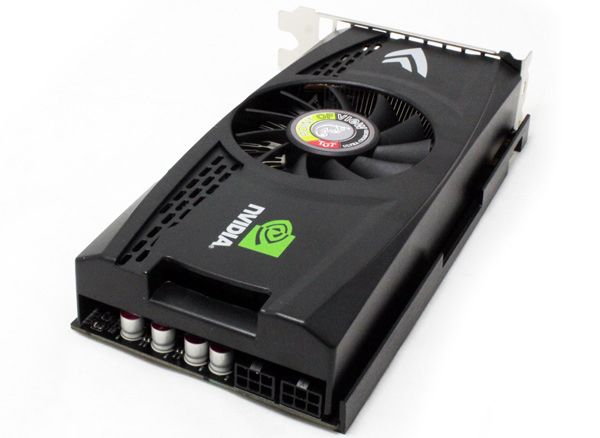
Although the connectors are on the far end of the card, the card itself is short and mounting it in smaller cases will not be a problem.
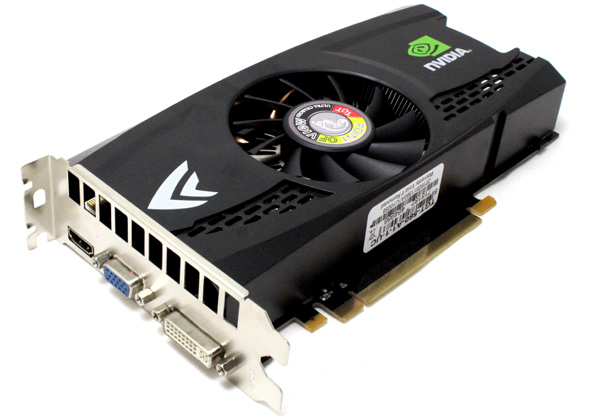
PoV / TGT GTX 560 Ultra Charged has one dual-link DVI, one standard HDMI and VGA connector. The card's cooler is pretty quiet considering the card is overclocked from 810MHz to 900MHz. We're talking about a classic cooler with a circular heatsink and two heatpipes. The memory is cooled by air from the fan only.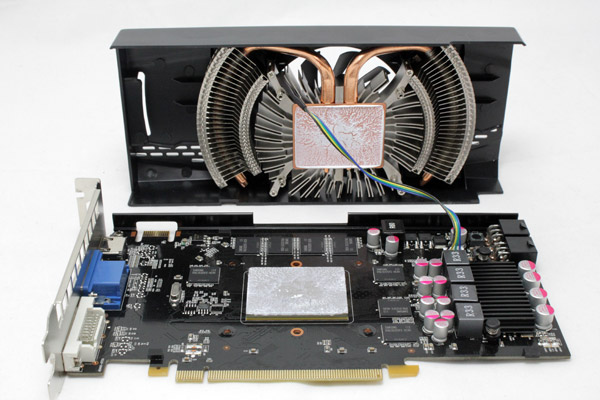
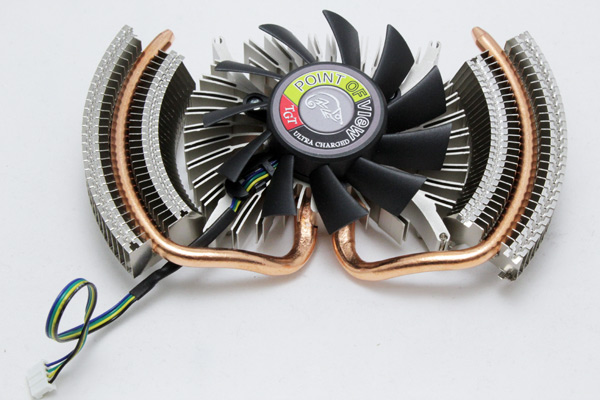
PCB looks pretty neat and tidy. The memory is placed on the GPU side of the PCB. The memory chips come from Samsung (model number K4G10325FE-HC04) and are specified to run at 1250MHz (5000 MHz GDDR5 effectively).
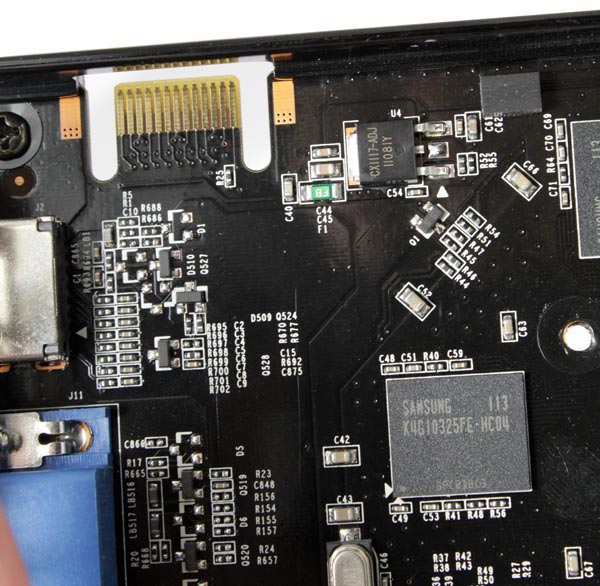
Top of the PCB has an aluminum bar that's used for improved heat dissipation.

Motherboard: EVGA 4xSLI
CPU: Core i7 965 XE (Intel EIST and Vdrop enabled)
Memory: 6GB Corsair Dominator 12800 7-7-7-24
Harddisk: OCZ Vertex 2 100 GB
Power Supply: CoolerMaster Silent Pro Gold 800W
Case: CoolerMaster HAF X
Fan Controler: Kaze Master Pro 5.25"
Operating System: Win7 64-bit
Nvidia 275.20_desktop_win7_winvista_64bit
AMD 11.5 CCC
3DMark 2011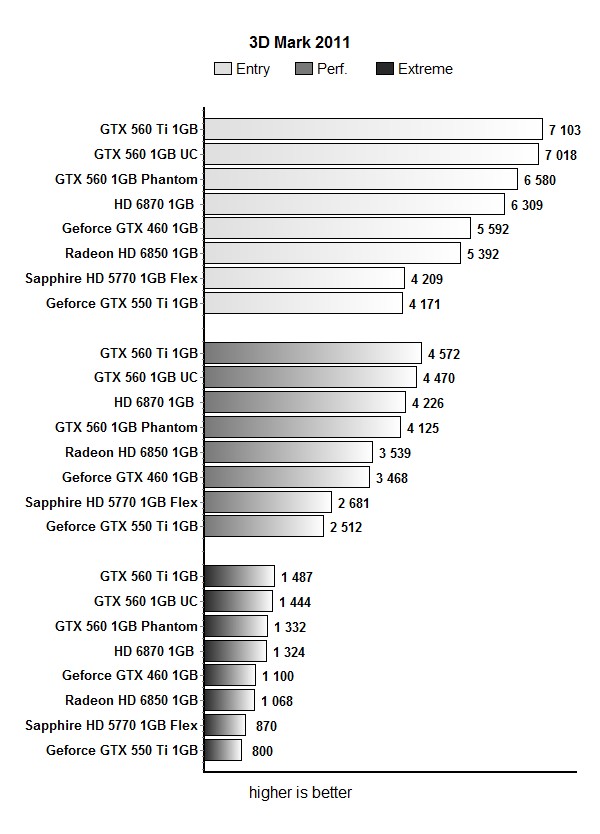
Aliens vs Predator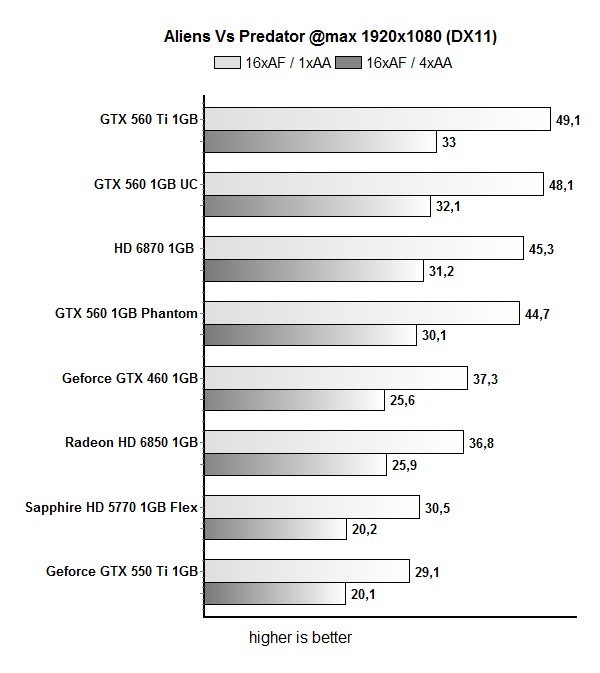

Dirt 2
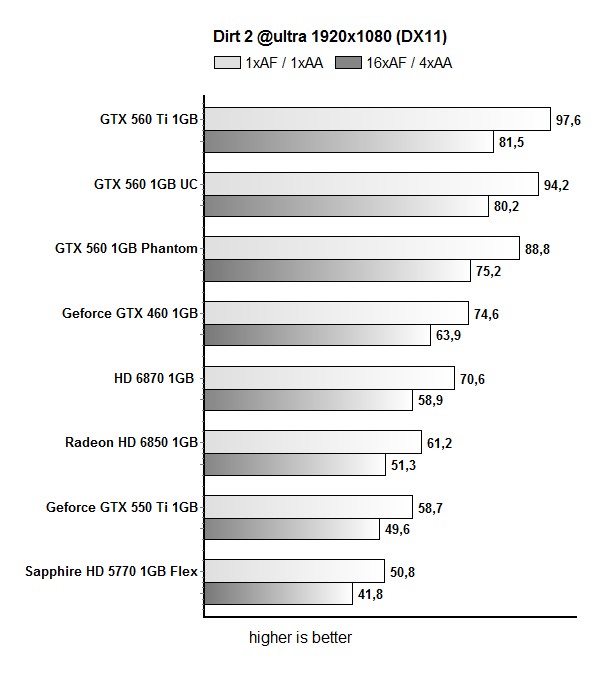
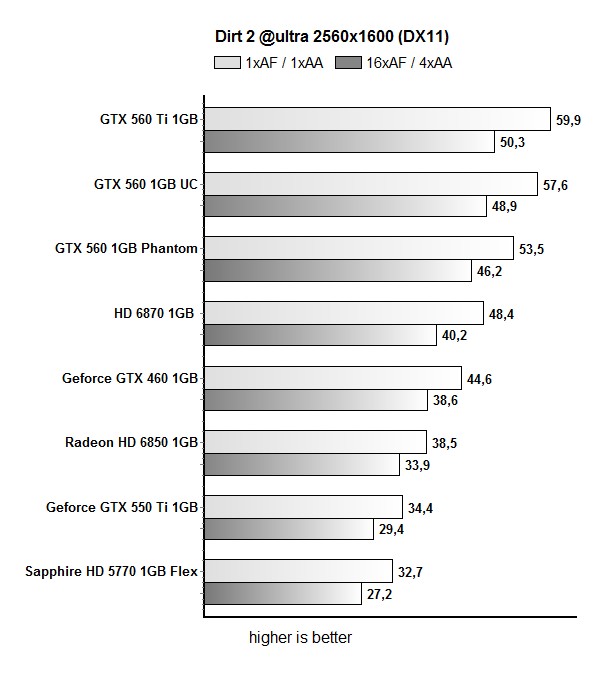

Unigine Heaven
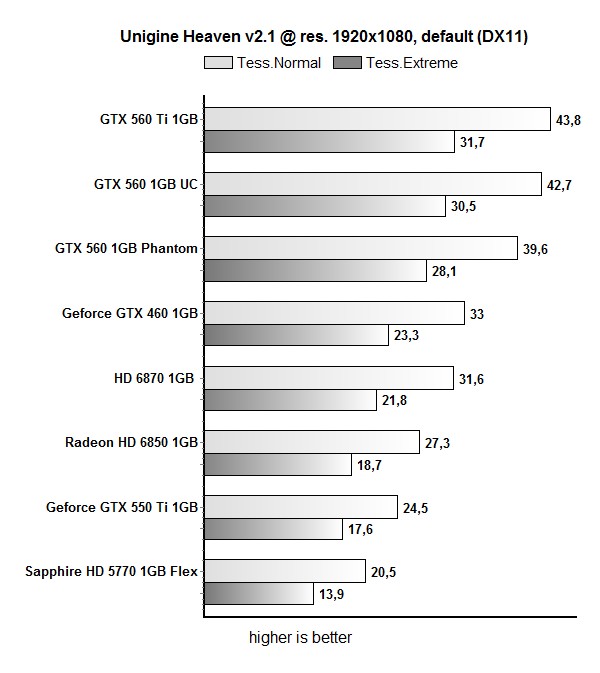
TessMark
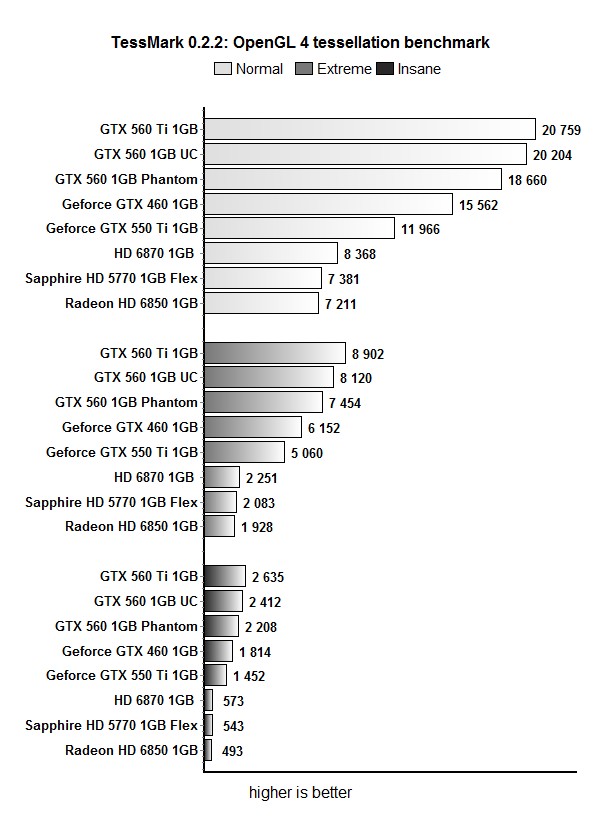
Overclocking
Point of View / TGT Geforce GTX 560 Ultra Charged comes factory overclocked.

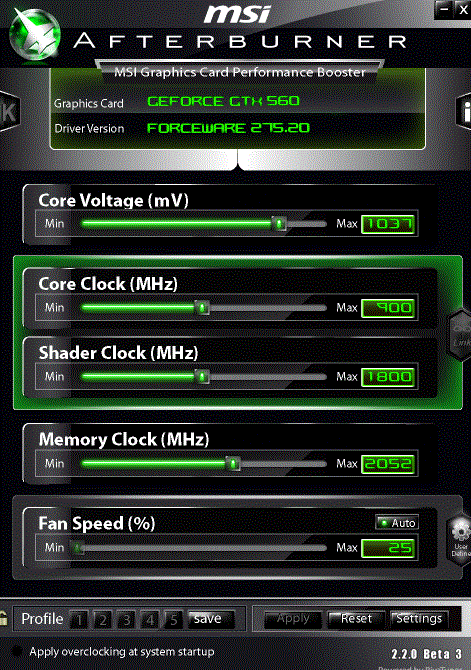
We managed to push the GPU to 970MHz, which is pretty much a maximum you can squeeze out from the GF114 on GTX 560 cards.
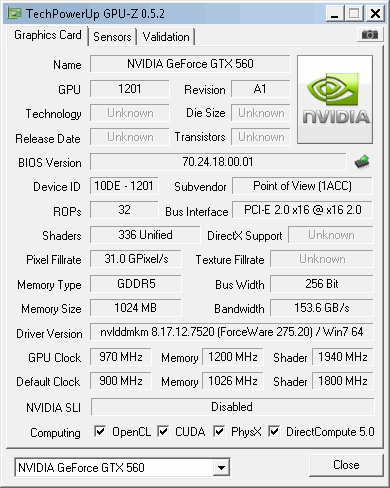
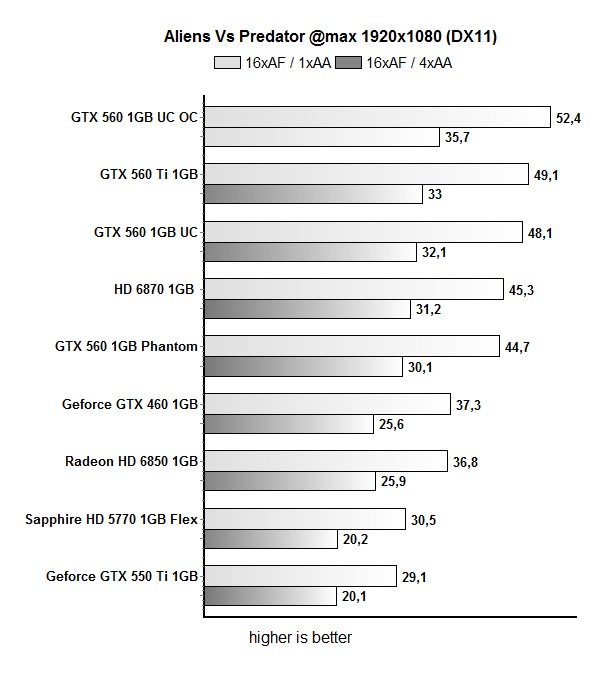
Although we didn't manage to hit constantly stable 1GHz, GTX 560 Ultra Charged allowed us to enjoy the following.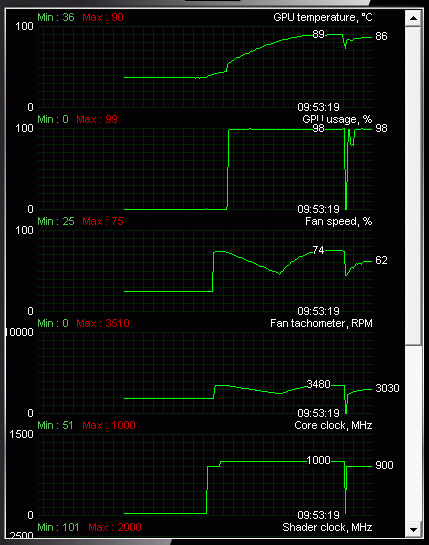
Afterburner recorded an interesting thing -- after the instability caused by the 1000MHz clock, the card downclocked to 900MHz. The app we were running at the time didn't crash.
Thermals and Noise
You'll hear the fan during gaming but it is pretty quiet when idle. Pushing the card to 970MHz resulted in temperatures up to 92°C, whereas 900MHz operation saw temperatures up to 86°C.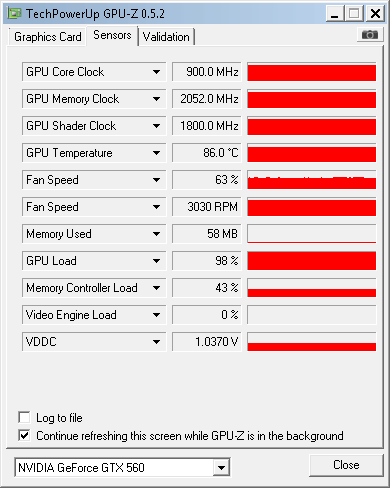
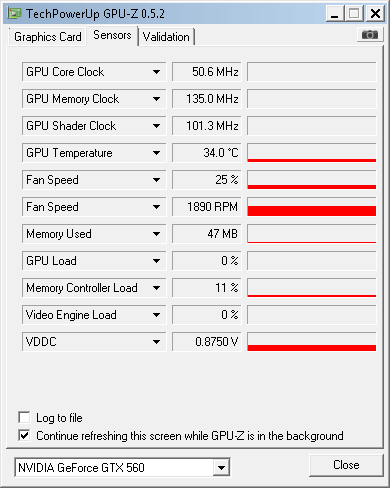
Today we tested Point of View/TGT’s GTX 560 Ultra Charged graphics card. We’ve grown to expect the company to come up with some nice overclocks, and today was no exception. Nvidia’s partners pounced on the chance to put the GF114’s overclock potential to good use and although you’ll find some overclocked by only 12MHz, PoV/TGT’s GTX 560 Ultra Charged boasts a 90MHz overclock.
A reference clocked Geforce GTX 560 allows for smooth 1680x1050 gaming, whereas 1920x1080 will depend on the game and graphics settings. Thankfully, overclocked GTX 560 Ultra Charged card is up to 9% faster than the reference GTX 560 and that will allow for smooth 1920x1080 gaming.
Overclocking-friendly GTX 460, GT 560 and GTX 560 Ti cards made the €120-200 offer nicely filled out and there are plenty of cards to choose from. It seems like there are more than 100 different cards derived from the aforementioned cards.
As we said, Point of View/TGT GTX 560 Ultra Charged is one of the fastest GTX 560 cards around. Point of View/TGT 560 Ultra Charged currently goes for €184, which is a few euro higher than the GTX 560 Ti. While the card is undoubtedly quality, we must say that the pricing should have been at least a bit lower in order to compete with the GTX 560 Ti.
You can find it here.



